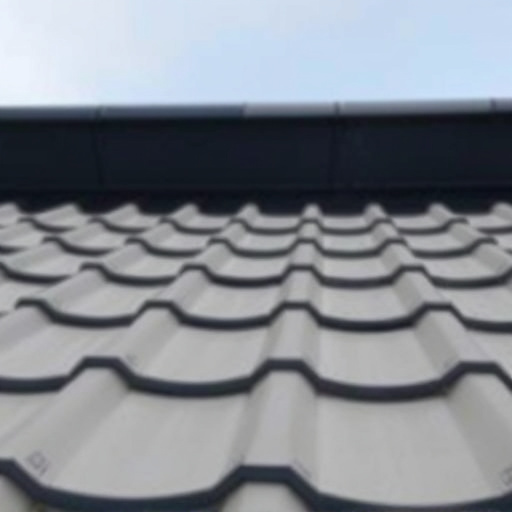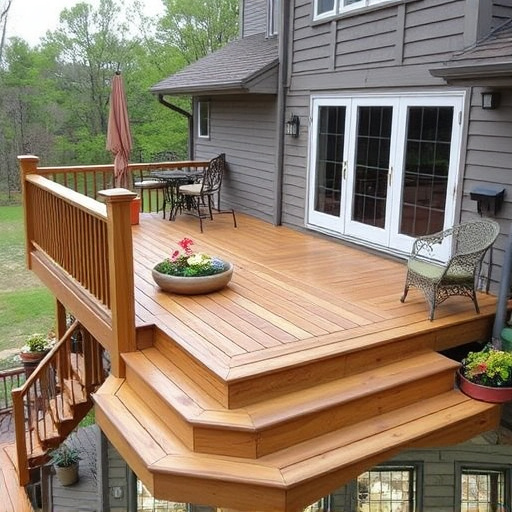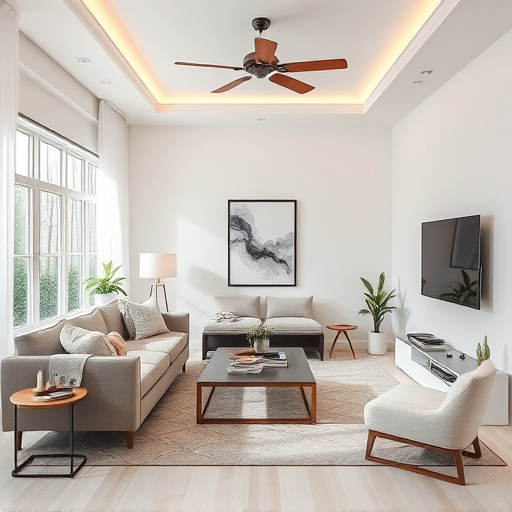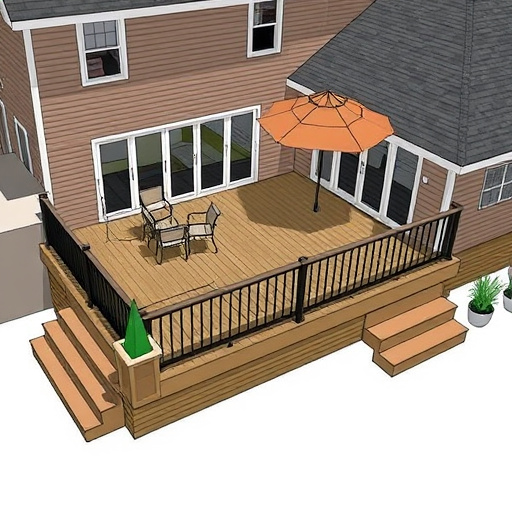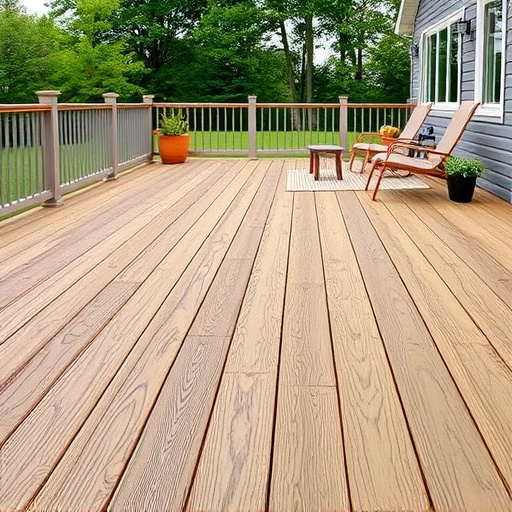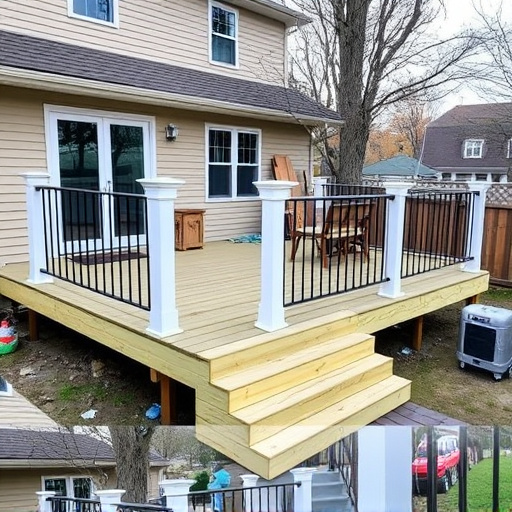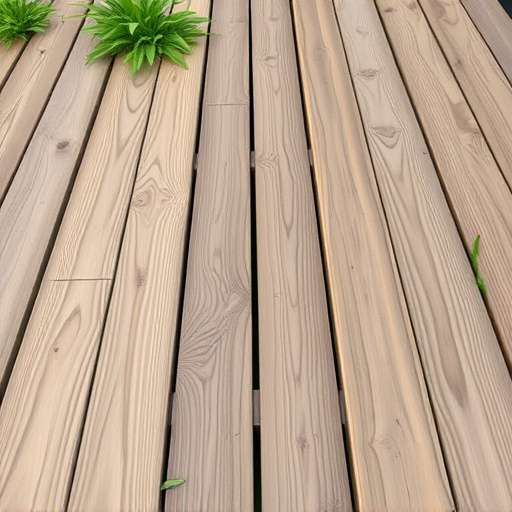Before creating a custom deck design, assess your space, intended use (relaxation/entertaining or indoor extension), local climate, and landscape style. This ensures a tailored, practical design with suitable layout, materials, and features, enhancing outdoor living for years to come. Incorporate drainage, water-resistant materials for wet regions, and adequate shading for sunny areas; integrate complementary landscapes and architecture for a cohesive look or modern minimalist designs for contrast.
Creating a custom deck is an exciting way to enhance your outdoor living space. This guide will walk you through the process of designing the perfect deck, from understanding your needs to practical implementation. We’ll cover evaluating the deck’s purpose and climate adaptation, choosing a style, and ensuring structural safety. Learn how to balance form and function, select quality materials, navigate permits, and budget effectively for a dream deck that suits your lifestyle. Discover tips on lighting and feature integration to make your outdoor area truly special.
- Understanding Your Space and Needs
- – Evaluating the Deck's Purpose and Usage
- – Considering the Climate and Environment
Understanding Your Space and Needs
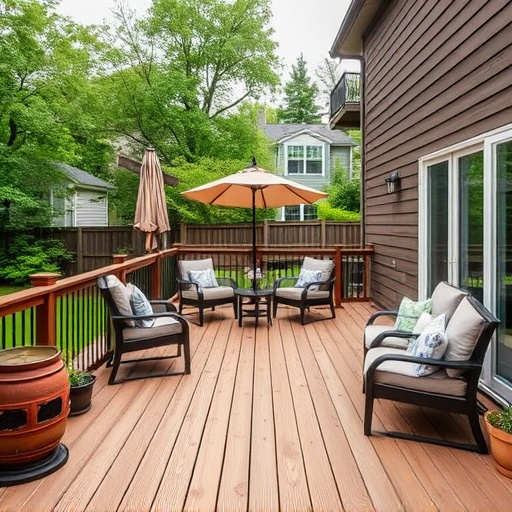
Before diving into the intricate details of creating a custom deck design, it’s crucial to start with a solid understanding of your space and needs. A well-designed deck should seamlessly blend with your existing landscape while catering to your unique lifestyle and preferences. Begin by assessing the available space—is it a sprawling backyard or a compact balcony? Consider the overall size and shape, as well as any structural elements that might influence design decisions.
Additionally, think about how you intend to use the deck. Is it primarily for relaxation with family, entertaining guests, or perhaps an extension of your indoor living space? This will dictate the layout, furniture placement, and even the materials used. For instance, a deck designed for al fresco dining might incorporate a built-in kitchen area and comfortable seating arrangements, while a retreat for quiet contemplation may focus on cozy nooks and natural elements like plants and water features. Incorporating these considerations early on ensures your custom deck design not only looks stunning but also serves your needs flawlessly.
– Evaluating the Deck's Purpose and Usage
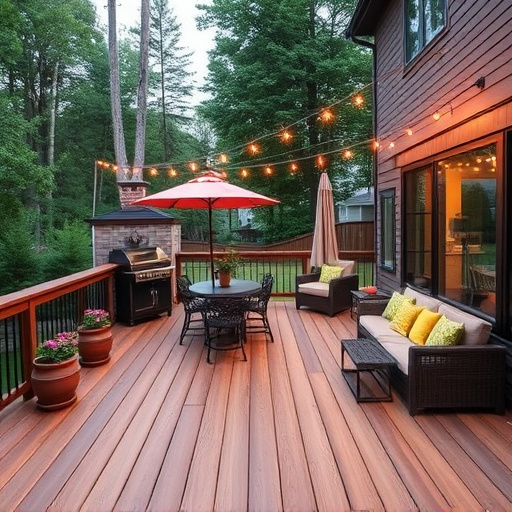
Before diving into the creative process of crafting a custom deck design, it’s essential to evaluate its intended purpose and usage. This step is crucial as it sets the foundation for the overall aesthetics and functionality of your outdoor space. Consider how the deck will be used; is it primarily for relaxation and entertaining guests, or will it serve as an extension of your living area with a focus on indoor-outdoor flow? The answer will guide your design choices, from the layout and size to the materials and features incorporated.
For instance, if your deck is designed for relaxation and entertainment, you might prioritize comfort with built-in seating areas, a firepit, or an outdoor kitchen. On the other hand, if it’s intended as an urban oasis for city dwellers, incorporating elements that mimic nature, such as vertical gardens or water features, could enhance its appeal. Additionally, keep in mind any practical considerations, like the need for shade, wind protection, or accessibility, especially when designing for commercial roofing and siding applications, where a deck can be both an asset and a functional feature, complementing professional siding and gutter services.
– Considering the Climate and Environment
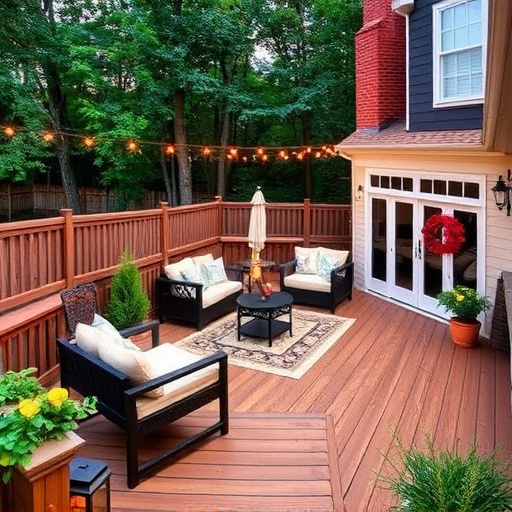
When designing a custom deck, one crucial element to consider is the local climate and environment. Different regions present unique challenges and opportunities that will impact your deck’s longevity and aesthetics. For instance, if you live in an area prone to heavy rainfall and snow, ensure your deck design includes proper drainage systems and water-resistant materials to prevent rot and structural damage. Choosing the right lumber treated for durability against moisture is also essential. On the other hand, dry, sunny climates may require decks with adequate shading to protect against rapid wood deterioration from prolonged sunlight exposure.
In addition to weather considerations, think about the surrounding landscape and your home’s architectural style. Complementary materials like natural stone or wood siding and gutters can create a harmonious look, blending seamlessly with your outdoor living space. For a more modern aesthetic, consider minimalist designs and clean lines that contrast with traditional roofing solutions. Incorporating these elements will not only enhance the visual appeal of your deck but also ensure it stands the test of time, providing you with years of enjoyable outdoor experiences.
When designing your perfect custom deck, understanding your space and needs is key. By evaluating the deck’s purpose, considering climate, and tailoring the design accordingly, you’ll create an outdoor living area that enhances your lifestyle and becomes a central point of enjoyment for years to come. Remember, the right deck design can transform your backyard into a vibrant, functional extension of your home.



